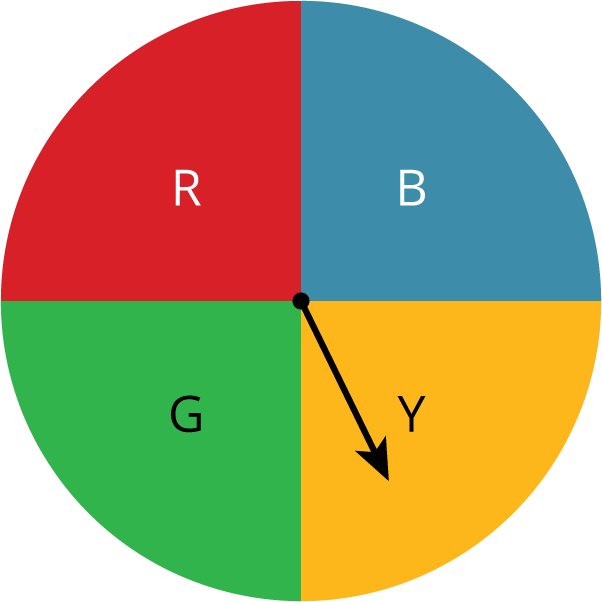The probability of an event is a measure of the likelihood that the event will occur. Probabilities are expressed using numbers from 0 to 1.
If the probability is 0, that means the event is impossible. For example, when you flip a coin, the probability that it will turn into a bottle of ketchup is 0. The closer the probability of some event is to 0, the less likely it is.
If the probability is 1, that means the event is certain. For example, when you flip a coin, the probability that it will land somewhere is 1. The closer the probability of some event is to 1, the more likely it is.
If we list all of the possible outcomes for a chance experiment, we get the sample space for that experiment. For example, the sample space for rolling a standard number cube includes six outcomes: 1, 2, 3, 4, 5, and 6. The probability that the number cube will land showing the number 4 is $\frac16$. In general, if all outcomes in an experiment are equally likely and there are $n$ possible outcomes, then the probability of a single outcome is $\frac{1}{n}$.
Sometimes we have a set of possible outcomes and we want one of them to be selected at random. That means that we want to select an outcome in a way that each of the outcomes is equally likely. For example, if two people both want to read the same book, we could flip a coin to see who gets to read the book first.
